Wind turbines are one of the most controversial environmental topics around. Renewable energy policies have come under attack recently, yet huge growth spurts in wind farms are occurring all over the country.
So if it is such a controversial energy source why are wind farms still being built?
Environmentalists say that we desperately need to build as many wind turbines as possible to make cleaner energy, while conservationists say stop ruining the countryside by building turbines that won’t solve any of our global warming problems.
Wind turbine farms usually get built in rural areas where, all over the world, there has been huge local opposition.
Concerns about the affects of wind farms have ranged from adverse health effects, rise and decline in temperatures, noise pollution, visual impacts, and deaths of birds that fly into the rotor blades.
Issues surrounding wind farms
Wind power is being promoted due to future worries about not being able to import foreign fuels. This has greatly influenced the demand for investments in ‘home grown’ energy in order to guarantee security and independence for the future, as well as trying to help the future ‘Hot Generation’ who will have to live with the damage that has already been caused by global warming.
Although wind power turbines have relatively little impact on the environment compared to fossil fuel power plants there are still issues surrounding their existence.
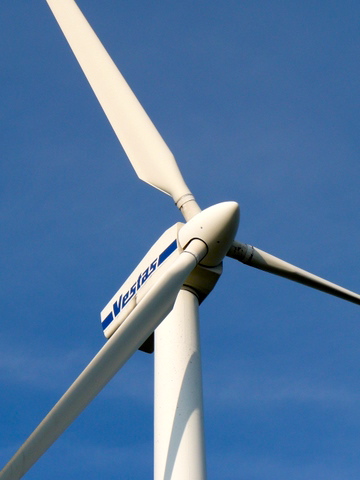
One of the most common arguments used is that every farm is liable to kill thousands of birds, including rare species. The RSPB, which supports wind power, says it objects when there is ‘insufficient information about the risks to birds and their habitats to conclude that there will not be a problem’.
A spokesman for The British Wind Energy Association said: “Even in Altamont Pass in America, where 7,000 turbines were erected on a migratory route, it was only 0.2 birds per turbine per year. Compare this with the number killed by cats, cars and by flying into windows, or even by global warming, and it is not significant at all.”
Scientists have also dismissed the idea of a ‘wind turbine syndrome’ after a study by a panel of independent experts found that the irritation caused by the noise around wind farms effected certain individuals.
‘Wind turbine syndrome’ was said to have been caused by the vibrations in the air or the particular sound waves from wind turbines, causing headaches, nausea and panic attacks.
Scientists did however admit that the ‘swishing’ sound caused by wind turbines can ‘annoy’ some people, keeping them awake at night and even causing psychological problems because of the stress.
Generally turbine sites are situated in exposed places, where they are often highly visible. Aesthetic issues are another disadvantage which impacts the surrounding environment. Expressed by the term ‘visual impact’ or ‘visual pollution’.
This is also an subjective issue. Some people argue that they believe the wind turbines look nice and enjoy the visual impact, others disagree seeing the turbines as a blemish on the landscape.
But other energy sources such as oil rigs, coal mines or nuclear plants are still not aesthetically pleasing, but appear all over the world.
Wind farms internationally
Internationally the UK is ahead of any other country in the world in terms of offshore wind, with both the US and China taking a close interest in how the industry develops.
Europe, Asia and the Americas are all embracing new forms of renewable energy and are reaping great benefits from it. Today, about 75 countries worldwide have commercial wind power installations, with 22 of them already passing the 1 Global Wind (GW) level.
“Despite the state of the global economy, wind power continues to be the renewable generation technology of choice”, said Steve Sawyer, Global Wind Energy Council (GWEC) Secretary General.
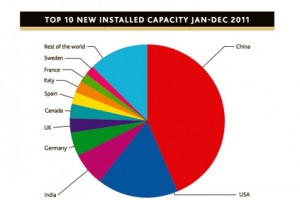
“2011 was a tough year, as will be 2012, but the long term fundamentals of the industry remain very sound. For the second year running, the majority of new installations were outside the OECD, and new markets in Latin America, Africa and Asia are driving market growth.”
China has consolidated its position as global market leader, with a cumulative capacity of more than 62,000 megawatts (MW). Although Chinese manufactures have the ability to learn quickly and adapt, wind technology seems to be a tougher challenge for them. The Chinese Government launched an investigation into the number of big power grid failures connected with wind turbines in the summer of 2011.
In India, 2011’s installations pushed the country’s total capacity to just over 16,000 MW. India added over 3000 MW of wind power installations in 2011 which is likely to go up to 5000 MW per year by 2015.
Australia, has also had severe ‘community concerns’ that have waged attacks on wind farms. However these concerns seem to be based on very tiny minority. There is against strong evidence that shows that renewable energy is extremely popular.
For example, a survey conducted by the NSW Government in 2010 showed that wind and solar are the two most acceptable forms of energy production by the community. These results show that the anti-renewable campaign has nothing to do with an cascading community angst, but rather part of a broader ideological war.
There is no doubt that the renewable energy industry will continue to grow throughout the world. Wind and solar energy sources are booming and will soon become more affordable than current fossil fuels.
Yet such global skepticism about renewable energy seems to cloud existing fuel sources such as coal or coal seam gas industry, which have a greater impact on the environemt.
Wind farms in Dorset
“We’re an island nation – there’s a lot of wind around,” Alan Duncan, told the Politics Show.
“We should use that offshore capacity for generating electricity that’s clean and secure.”
Dorset has taken on a green policy on recycling, and environmental issues in order to reduce their own carbon footprint. Dorset has two Green Energy Centres designed to help promote renewable energy sources to help educate about alternative energy saving solutions. However support for renewable energy such as the wind has not been so graciously received.
Dorset Against Rural Turbines say: “Rather than pouring millions of your money into wind energy for no effect we could pay for or subsidise lagging, greater roof and wall insulation, low energy bulbs and solar water heating. These simple measures would add less than 10% of the cost of building an average new house.”
The company Eneco who want to build a wind farm in Poole Bay called Navitus, have divided the community. Projected to open in 2019, with 180-250 wind turbines about 10 miles from Bournemouth and Poole, many businesses have raised concerns over Bournemouth’s famous views being damaged.
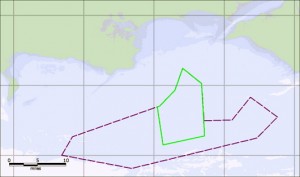
Charlie Barley said: “Given the choice between more turbines and another nuclear power station at Winfrith I’d much rather have turbines. They are not the whole answer to our energy needs but surely they can make an important contribution.”
There have been a number of local concerns about the future of the area if the wind farm is to be built.
Doug Mills, from Poole said: ‘With respect to those lobbying for greater wind turbine numbers, the only dangerous climate change currently faced by the UK will be the rolling power cuts lasting for years, killing and crippling the poor, elderly and infirm.’
Headlines in local newspapers have highlighted the damaging affects on the area such as the possible affects in tourism, and the farm costing of 500 jobs and other potential effects of the Poole Bay wind farm.
A letter that was sent to David Cameron last week demanded that subsidies for wind energy to be slashed and for the focus of the government’s renewable energy policies to be shifted in favour of more ‘reliable’ energy sources. This letter was signed and supported by Dorset MPs such as Richard Drax and Bob Walter, along with Robert Syms in Poole.
MP Bob Walter says: “Dorset is the most illogical place to put wind farms because the wind doesn’t blow enough.”
However the Deputy Prime Minister, Nick Clegg, offered more support for the wind industry, saying: “The race is on to lead the world in clean, green energy. The choice for the UK is simple: wake up, or end up playing catch up.
“We have every reason to be confident. The combination of enviable wind, wave and tidal power, a world-beating research base and a proud history of engineering give the UK a clear competitive edge”
The Coalition Government remains committed to an ambitious programme of constructing wind farms, and still hopes to boost numbers up to 10,000 turbines onshore and 4,300 offshore by 2020.
The future of ‘green energy’
Internationally everyone is working towards a sustainable future by reducing energy needs and developing a wide range of alternative forms of energy generation. Issues against future availability of fossil fuels or the development of alternative energy sources will continue to be explored and debated.
We cannot be reliant on importing fuel forever but new green technology has not quite yet learnt to fit into the landscape. It is clear that the renewable energy industry is growing and valuable concerns about effects of these green farms have been outweighed by the positive future outcomes.
Although this industry is still growing and is not yet perfect, there is reason to hope that the issues that are raised by wind farms will be fixed and altered in the future. Look at the technological advance in phones over the past decade, the mobile went from a large chunk of plastic to a thin, interactive ‘must-have’ item.
Related Articles:
Coastal wind park project raises concern over onshore impact






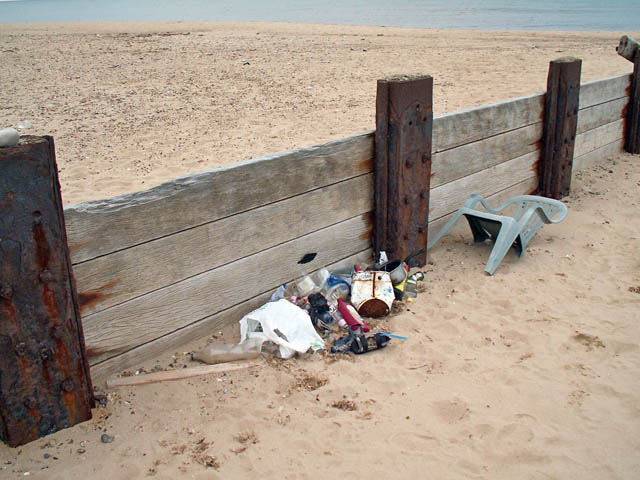
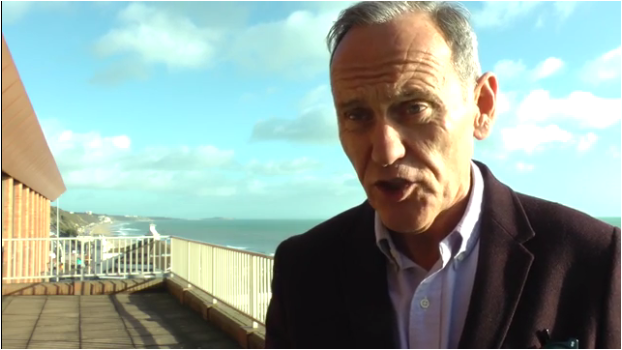

Comments are closed.